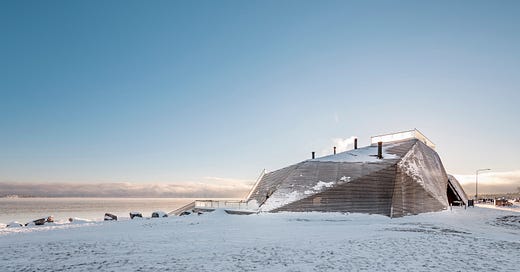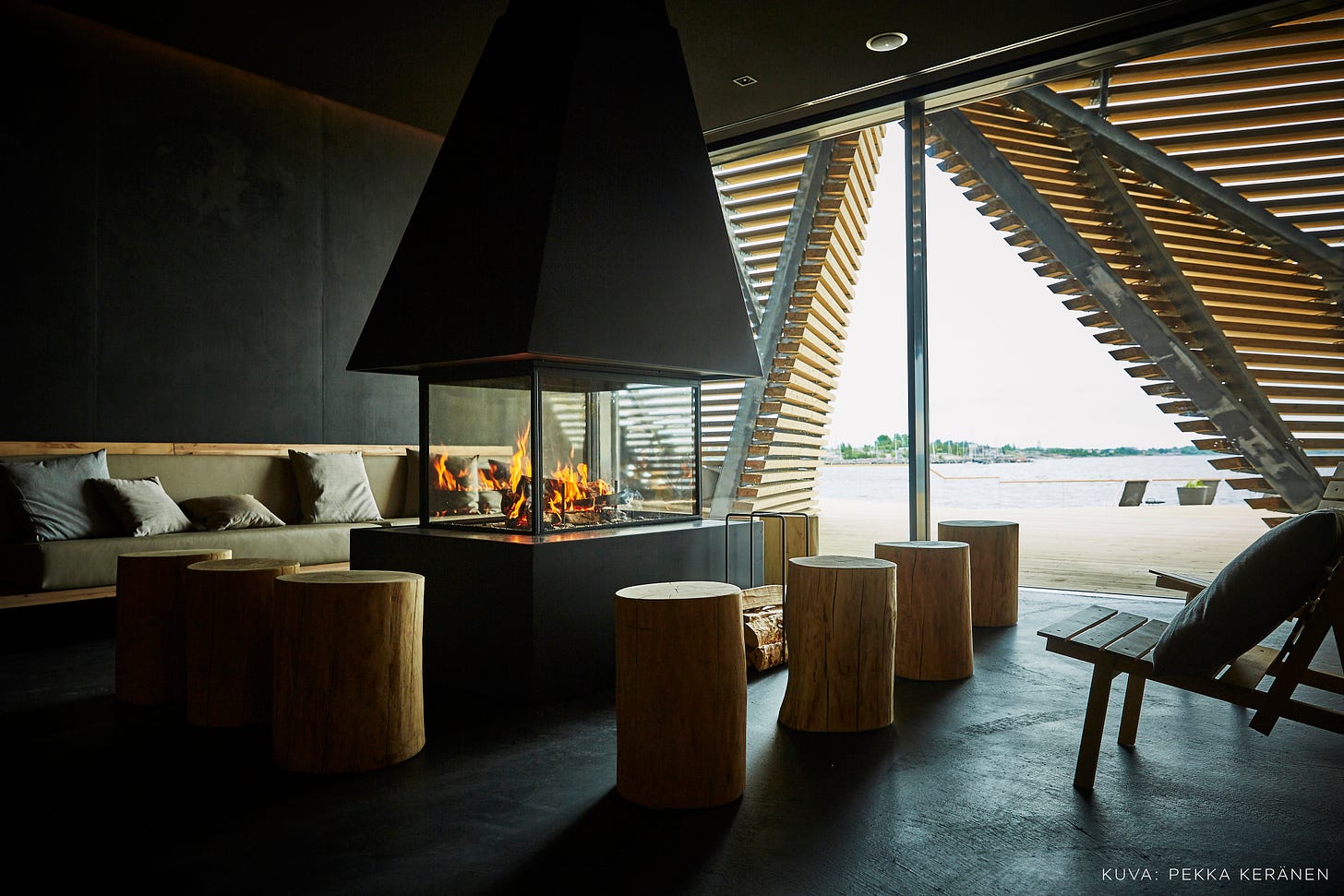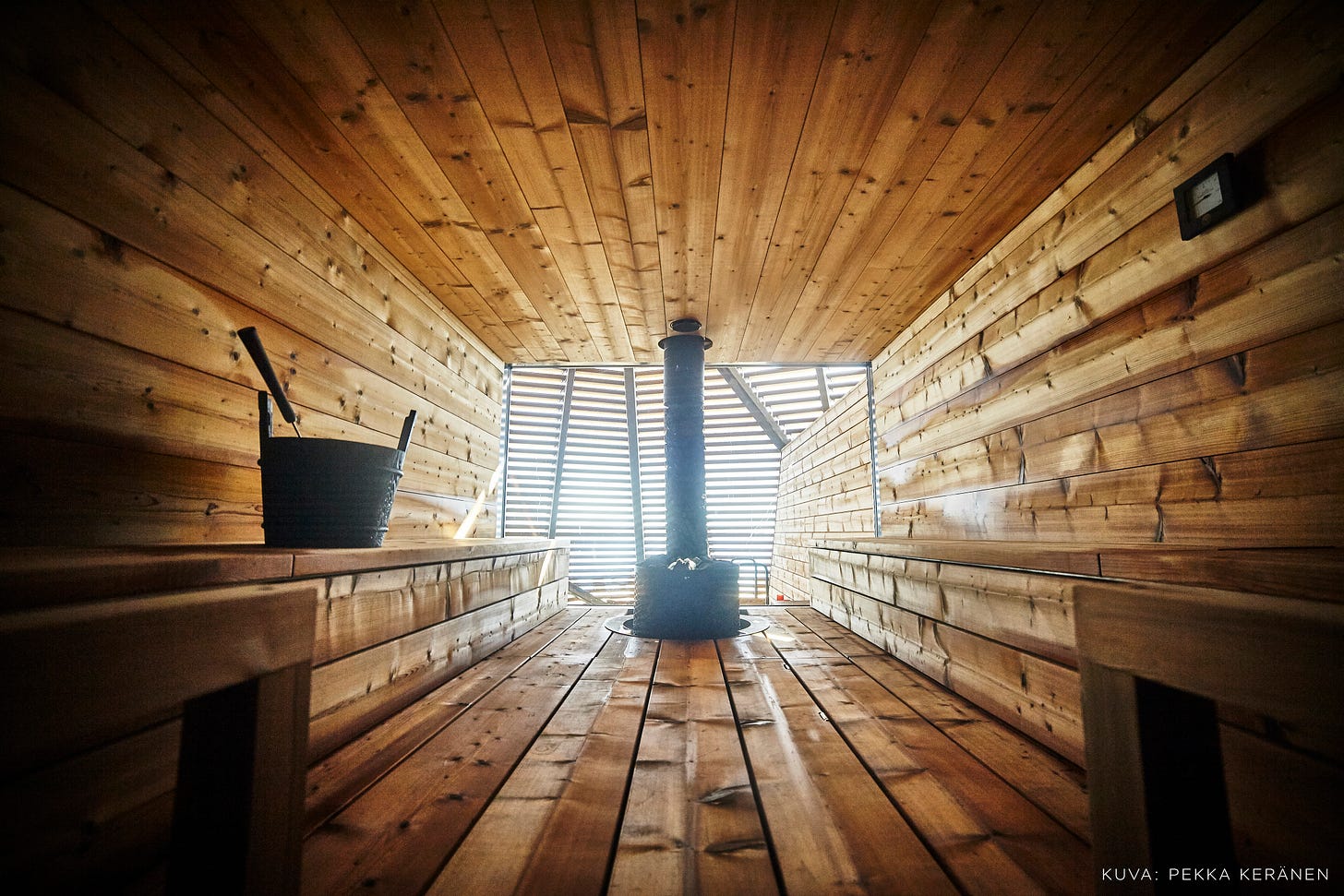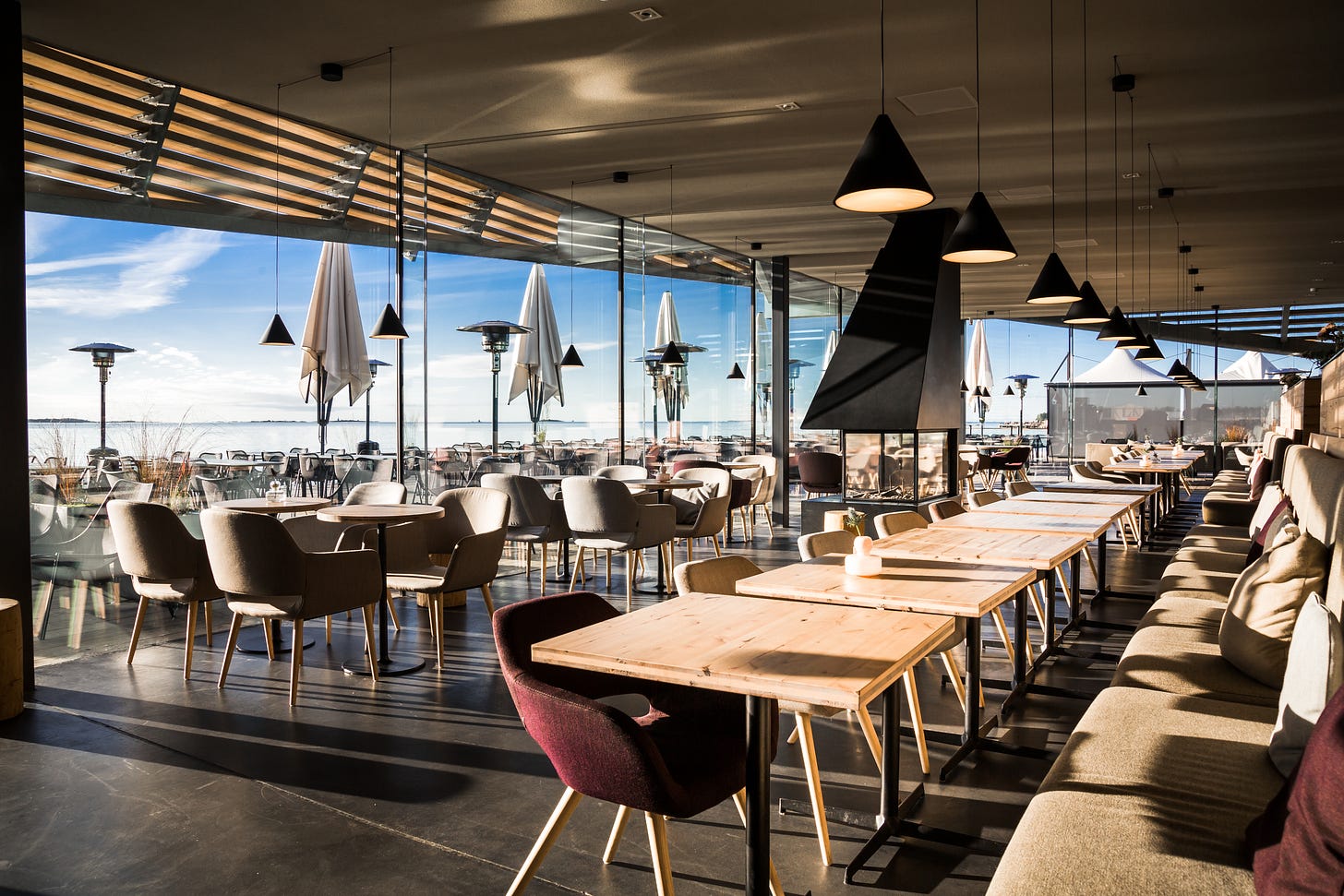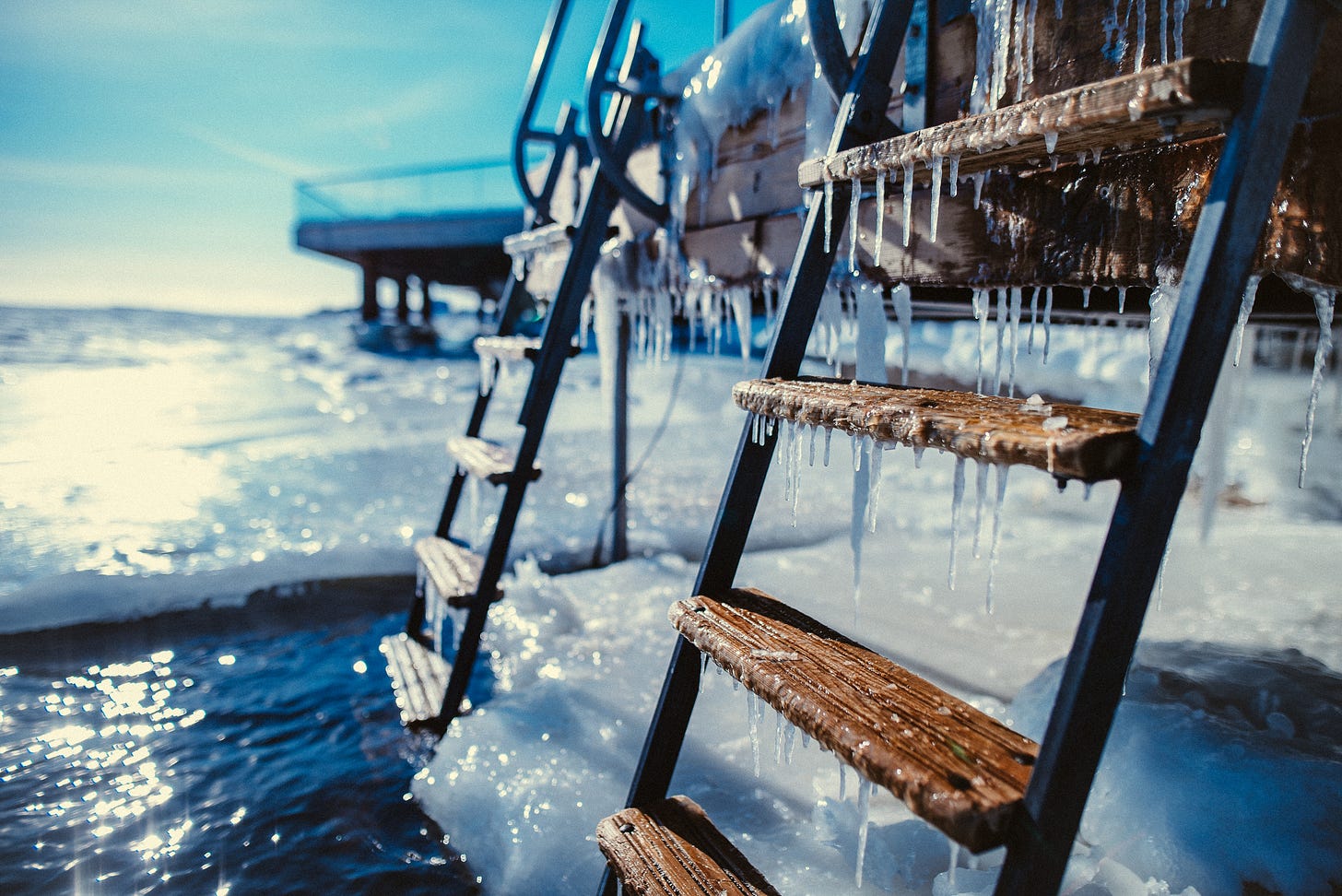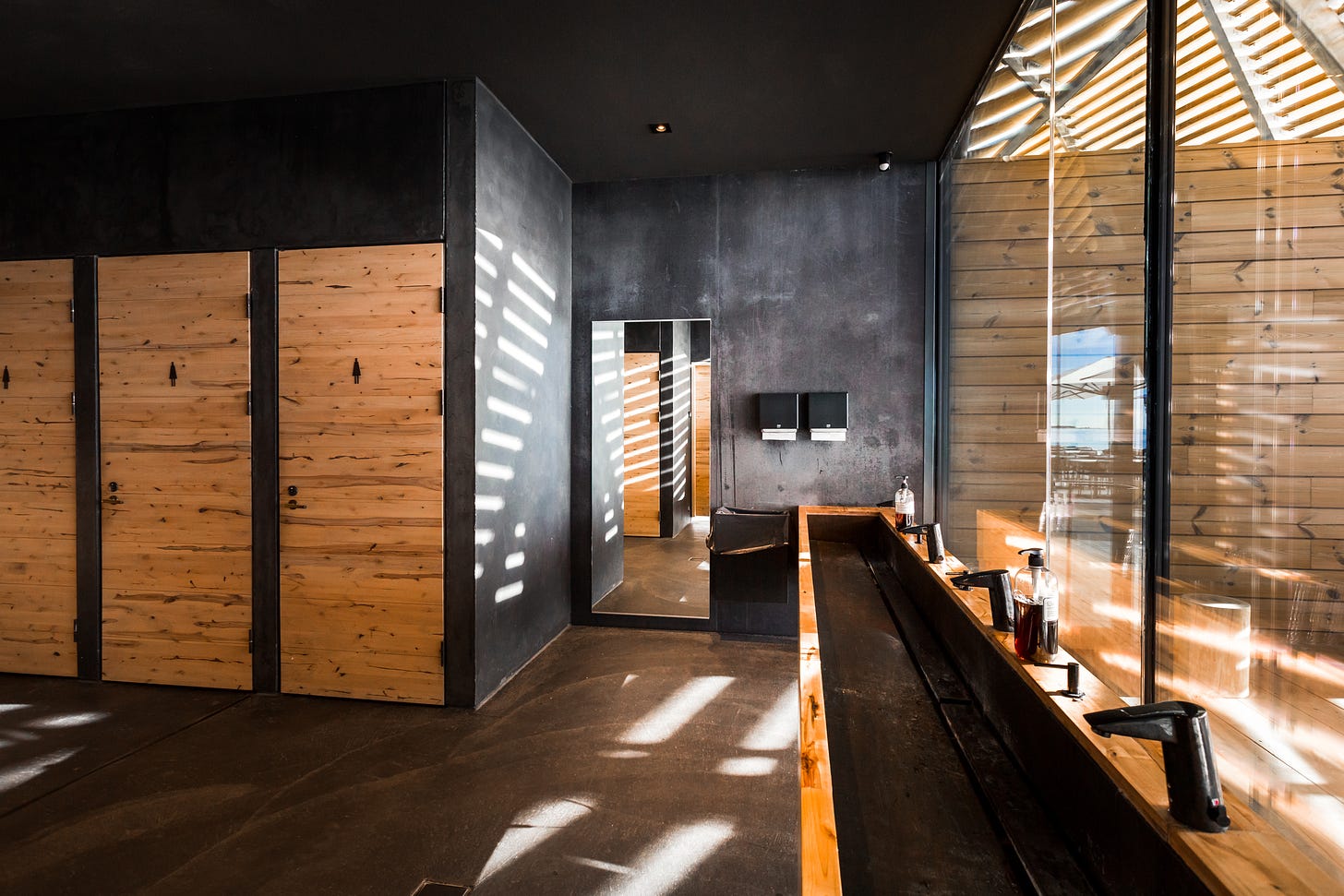Inside the building that will, quite literally, take your breath away
Undulating along the Baltic waterfront on a former industrial site, Lӧyly Sauna is more than a timber-clad jewel in Helsinki's architectural crown. It is a hub of warmth, happiness and social cohesion
There are certain places in life that we just know we will never forget.
For me, Lӧyly Sauna in Helsinki is about the most memorable building I have ever set foot in.
Uniquely designed and beautifully positioned looking out over the icy depths of the Baltic Sea clad in “a cloak” of heat-treated pine panels for maximum weather resistance, Avanto Architects’ geometric dome packs a visual punch.
But it is not the impressive structure that first comes to mind when I think back to my visit.
Nor is it the otherworldly waterfront location - made all the more beautiful by the fact that Lӧyly sits on a disused industrial estate on the outskirts of Helsinki where it has been breathing life back into a part of the city in desperate need of regeneration since it opened in 2016.
What I remember, above all else, is how spending time in this building made me feel; content, rejuvenated, connected. And that is not to be underestimated.
As I said back in my very first Well-Placed post, the feelings evoked by a certain place, building or city are extremely powerful. You would assume, given that the success of the built word ultimately relies on how well it supports the people existing within it, that design and development which puts those people at its heart would be a widespread given. It isn’t. Certainly not often enough.
But there are pockets of brilliance. And, for me, Lӧyly - voted one of Time Magazine’s World’s 100 Greatest Places - is one such pocket. One from which there is so much to learn about what it means to design and deliver a truly human-centred space.
There can be no doubt that the sauna’s architectural prowess and Baltic vistas played a huge role in evoking the positive feelings I had when I visited. But the fact I remember them vividly, almost viscerally, so long after my trip speaks volumes about what else this space had, and indeed has, to offer.
Lӧyly’s success as a public space, I have come to realise, lies as much in its function as its form.
Stripped back and laid bare
The power of wellness has never been more integral to how we think about futureproofing our spaces and places. Far more accepted as a bone fide measure of success and end-user retention than in years gone by, buildings that promote health and well-being are paving the way to a more human-centred built world.
As Helsinki’s most architecturally significant public sauna, Lӧyly is a prime example of what can be achieved when great design is layered on top of a building where well-being is baked in - quite literally in the depths of the saunas themselves; one dry and one traditional Finnish smoke.
Split into two parts, the dim-lit saunas make up one half of the Lӧyly structure. The other is given over to a dramatic glass cocktail bar and restaurant looking out onto the Baltic and bathed in blue-grey natural light . The saunas are housed in a rectangular, glass fronted black box clad under the undulating timber cloak which works like a “venetian blind” allowing those inside to enjoy the sea view while shielding them from the outside looking in.
Since opening, Lӧyly has become one of Helsinki’s best known and most significant social hubs. A place where people come to connect, this was a driving force behind the concept of the project from the outset. With private, home-based saunas becoming increasingly commonplace in Finland, Lӧyly’s owners - Finnish politician Antero Vartia and actor Jasper Pääkkӧnen - wanted to create a space that would bring people together in celebration of sauna culture. And it worked.
When I visited on a Friday night - the saunas are open until 10:30pm - I was struck by the number of people sitting wrapped in towels on log stools around a roaring fire chatting and catching up over drinks. Rosy-cheeked and sparkly-eyed after time spent in and out of the heat and the ice-cold of the literal Baltic (more on that later and it is worth reading on for, trust me) this was weekend drinking like I have never seen before.
Without so much of the armour we often deploy when we socialise - mobile phones, make-up, a carefully selected outfit that isn’t swimwear - comes an overwhelming sense of freedom and calm focus.
Anyone au fait with sauna culture will know this already. But for me, it was a new and very welcome experience. And yet, still not the most memorable of the visit.
Taking the plunge
Much of Lӧyly’s air of cool contentment stems from the fact that it is a public space intrinsically linked to nature, both in terms of a commitment to natural materials - more on that to come - and as a result of free-flowing access to the Baltic Sea.
Not only does the building’s extensive, 5,000 sq ft terrace jut out over the water - or ice depending on the time of year - bringing a whole new meaning to the concept of indoor-outdoor space, but active engagement with the surrounding natural world is strongly encouraged. Whatever the weather, whatever the temperature. In fact, the colder the better.
There is a direct path from each of the saunas to the Sea. In the winter, visitors run (or, as the more seasoned pros demonstrate, casually stroll) through several feet of snow barefoot and in nothing but their swimwear to climb down a set of wooden steps heavy and creaking with icicles directly into the Baltic Sea - often through a hole cut in the ice. Breath taking on a whole new level.
I visited in January so you can take my word for it.
Laid back and easy-going
Back to the architecture now and each and every element of what makes Lӧyly so special is elevated by it’s design - both inside and out - and location.
From the intuitive form and flow of the structure to the contrast between spaces bathed in natural light and those illuminated only by the gentle flickering of firelight, Lӧyly’s commitment to well-being is unwaveringly mirrored in the building itself. Not least given the widespread use of natural materials - a guaranteed mood-booster.
The first building in Finland and the second in the Nordic countries to receive FSC project certification, every material used in the construction of the sauna is natural - right down to the birch bark used to make the bar counters, restaurant tables and hand basins.
No space is wasted and the roof, which doubles up as a series of decks and terraces, is accessible via timber steps incorporated into the structure. A further 4,000 planks of timber make up an outdoor auditorium looking out across the sea.
The architects brilliantly refer to the building’s style as “easy-going”. Designed to be slim and elongated so as not to cut-up the thin strip of land it sits on and as low as possible to avoid blocking the views of any future residential development in the area, perhaps one of the best descriptions of the structure refers to how Lӧyly will age and weather - “when the wooden building turns grey, it will become like a rock on the shoreline.”
It is rather poetic that a structure so striking has been designed, quite deliberately, to settle, melt and fade into its natural surroundings as the years go by. But then, that’s very Lӧyly; timeless, natural beauty at its best.
For more Helsinki content on Well-Placed, check out my piece on the Oodi Library by clicking here.
Emily Wright is a real estate, architecture and technology journalist contributing to titles including Wallpaper*, WIRED, GQ, The Spaces, The Evening Standard, The Times and The Telegraph. She spent 12 years of her career at EG where she worked as both tech editor and then head of content. She has interviewed major players from both within and outside the property industry including Zaha Hadid, Sidewalk Labs' Dan Doctoroff, Lord Richard Rogers, Daniel Libeskind, Donald Trump and Sir Terence Conran.
Emily is now head of content at CREtech where she specialises in curating content and interviewing speakers from across the built world with a focus on innovation and sustainability. She is also a contributing editor, moderator and keynote speaker focussed on design, development, cities, innovation and ESG.

